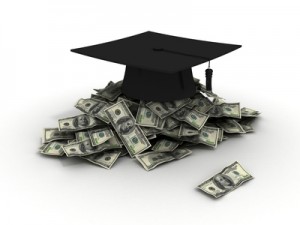The day a son or daughter receives his/her college acceptance letter is one filled with joy and celebration. The day that parents have to sit down with their children to choose student loans is not. Selecting a student loan is often an intimidating process: not only are there so many options out there, but it is scary to think that a wrong decision could cost tens of thousands of dollars. But before you pull out all of your hair just thinking about it, know two things. One, Almost 60% of college students have to borrow money each year to assist in tuition. And two, there is a resource out there that helps parents and their kids find, using objective data, the student loan that best fits their needs and preferences.
FindTheBest just launched the best student loans comparison that lets students and their parents sort through 69 different loans by average fixed and variable interest rates and lifetime limit. One can also filter down this list by loan type, loan coverage, eligible borrowers, cosigner requirements, and more. For example, if you are an undergraduate that wants to get a loan from a private bank, you have a list of 7 loans to compare. From here, you can pick the three or four loans that you like the most, and then compare side-by-side all of their application requirements, coverage, interest rates, repayment options, and more.
To summarize, FindTheBest breaks down the data, makes it easy to view, gives it to students and parents for free, so that scams and hidden fees are no longer a threat. With this resource, students can make the most informed decision based on the factors that are important to them. And if you have, no idea where to even start with student loans, check out the “Choosing A Student Loan” tab that guides you through the loan process and how this comparison tool works. Try out the resource now below:
[findthebest container_style=”width:520px;margin:0 auto;” width=”520″ height=”400″ style=”vertical-align:top;” src=”http://student-loans.findthebest.com/w/srp?new=2&w=520&h=400&filter_by=lender_type,fixed_variable_interest,name_of_lender&amazon_id=parecountocol-20″ after_style=”text-align:center;” link_href=”http://student-loans.findthebest.com” link_style=”font:10px/14px arial;color:#3d3d3d;” link_text=”Compare Student Loans”]





